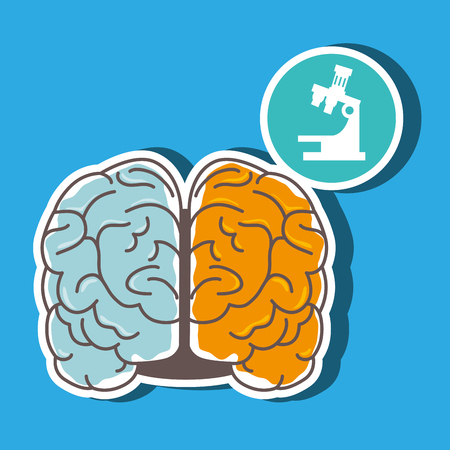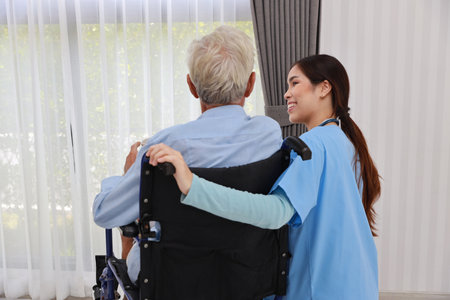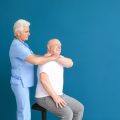1. Overview of Parkinsons Disease and Its Impact
What is Parkinsons Disease?
Parkinsons disease is a progressive neurological disorder that affects the way a person moves and controls their muscles. It occurs when certain nerve cells in the brain, especially those producing dopamine, become damaged or die. Dopamine is a chemical messenger that helps control movement, so when levels drop, symptoms like tremors, stiffness, and difficulty with balance can develop.
Prevalence of Parkinsons Disease in the United States
Parkinsons disease is one of the most common neurodegenerative conditions in America. According to recent estimates, nearly 1 million people in the U.S. are living with Parkinsons, and about 60,000 new cases are diagnosed each year. The risk increases with age, but younger people can be affected as well.
| Aspect | Details |
|---|---|
| Total Cases (U.S.) | Approx. 1 million |
| New Cases Per Year | About 60,000 |
| Most Common Age Group | Over 60 years old |
| Gender Prevalence | Slightly more common in men |
Key Symptoms of Parkinsons Disease
The symptoms of Parkinsons vary from person to person but often include:
- Tremors: Shaking or trembling, usually starting in the hands or fingers.
- Muscle Stiffness: Rigid muscles can make movement difficult and sometimes painful.
- Slowness of Movement (Bradykinesia): Everyday tasks may take longer than usual.
- Balance Problems: Unsteadiness that increases the risk of falls.
- Other Symptoms: Changes in speech, facial expressions, and even writing style.
Common Motor and Non-Motor Symptoms Table
| Motor Symptoms | Non-Motor Symptoms |
|---|---|
| Tremor Stiffness Slow movements Balance issues Shuffling walk |
Trouble sleeping Mood changes (depression/anxiety) Memory problems Constipation Loss of smell |
The Impact on Daily Living for Individuals and Families
Parkinsons disease affects much more than just movement. It can touch every part of a persons life—from daily routines like dressing and eating to social activities and relationships. Family members often take on caregiving roles, which can bring both emotional and physical challenges. Adjusting to these changes requires understanding, support, and sometimes professional help through neurological rehabilitation programs.
2. Evidence-Based Physical Therapy Interventions
Physical therapy plays a vital role in the neurological rehabilitation of people with Parkinson’s Disease (PD). Therapists use evidence-based approaches to help patients manage symptoms, improve function, and maintain independence. This section explores some of the most effective strategies currently used by physical therapists across the United States.
Gait Training
Gait disturbances, such as shuffling steps or freezing episodes, are common in PD. Physical therapists design personalized gait training programs to address these issues. Techniques might include:
- Visual and auditory cues: Using floor markings or metronomes to encourage longer strides and steady pace.
- Treadmill training: Walking on a treadmill under supervision to practice safe, rhythmic movement.
- Dual-task training: Practicing walking while performing another task (like counting) to enhance multitasking abilities.
Balance Exercises
Falls are a significant risk for individuals with PD. Balance exercises help strengthen stabilizing muscles and improve posture. Common balance interventions include:
- Static balance drills: Standing on one foot or using balance boards.
- Dynamic activities: Stepping over obstacles, changing directions, or practicing weight shifts.
- Functional balance tasks: Simulating real-life movements like reaching or turning in place.
Sample Balance Exercise Table
| Exercise | Description | Frequency |
|---|---|---|
| Tandem Stance | Stand heel-to-toe for up to 30 seconds | 2-3 times per day |
| Weight Shifting | Shift weight from side to side while standing | 10 reps, twice daily |
| Sit-to-Stand | Rise from a chair without using hands | 10 reps, twice daily |
Use of Assistive Devices
Assistive devices can offer crucial support for mobility and safety. Physical therapists work closely with individuals and their families to select appropriate devices and train them on proper use. Common devices include:
- Cane: Provides extra stability for those with mild balance issues.
- Walker or rollator: Offers more support and is useful for those with moderate to severe mobility challenges.
- Lifts or grab bars at home: Helps prevent falls during everyday activities.
Selecting the Right Device: A Quick Comparison
| Device Type | Main Benefit | Best For |
|---|---|---|
| Cane | Mild stability improvement; lightweight & portable | Mild balance impairment |
| Walker/Rollator | Maximum stability; may have a seat for rest breaks | Moderate to severe balance issues or fatigue |
| Lifts/Grab Bars | Aids transfers and reduces fall risk at home | Difficulties with standing up or moving safely at home |
The Importance of Tailored Interventions
No two individuals with Parkinson’s Disease are exactly alike. Physical therapists in the U.S. assess each patient’s unique needs and goals before creating a customized treatment plan. By combining gait training, targeted balance exercises, and the right assistive devices, patients can maximize their functional independence and quality of life throughout every stage of their journey with PD.

3. Occupational Therapy Strategies for Daily Functioning
Enhancing Independence Through Occupational Therapy
Occupational therapy (OT) plays a vital role in helping people with Parkinson’s disease maintain their independence and manage daily routines. By focusing on practical solutions, occupational therapists work closely with individuals to help them perform everyday tasks more easily and safely. In the United States, OT strategies are tailored to fit each persons unique needs and living environment.
Common Occupational Therapy Techniques
Occupational therapists use a variety of techniques to address the challenges faced by people with Parkinson’s disease. These may include:
- Task Simplification: Breaking down complex tasks into smaller, manageable steps so they are easier to complete.
- Energy Conservation: Teaching how to pace activities and take breaks to reduce fatigue.
- Handwriting Aids: Using special pens or writing guides for those experiencing tremors or difficulty with fine motor skills.
- Cueing Strategies: Providing visual or verbal reminders to help start or continue activities.
- Practice and Repetition: Building confidence and skill through repeated practice of daily tasks like dressing, grooming, or meal preparation.
Home Safety Modifications
A safe home environment is crucial for individuals with Parkinson’s disease, as balance issues and movement difficulties can increase the risk of falls. Occupational therapists often recommend changes that make homes safer and more accessible. Here are some common modifications seen in American households:
| Area of Home | Suggested Modifications |
|---|---|
| Bathroom | Install grab bars, use non-slip mats, add raised toilet seats, consider walk-in showers with benches |
| Bedroom | Add bed rails, use night lights, keep clutter off the floor for clear pathways |
| Kitchen | Place frequently used items within easy reach, use lightweight utensils with larger handles, install anti-slip flooring |
| Main Living Areas | Remove throw rugs, arrange furniture for wider walkways, ensure sturdy chairs with armrests for support when sitting or standing |
Adaptive Equipment Commonly Used in America
A wide range of adaptive equipment can make daily activities simpler and safer for people living with Parkinson’s disease. Below are some examples often recommended by occupational therapists in the U.S.:
| Equipment Name | Main Purpose/Use |
|---|---|
| Shower Chair & Handheld Shower Head | Makes bathing safer and reduces fatigue while showering |
| Dressing Stick & Sock Aid | Helps with putting on clothes and socks without bending or struggling with fine motor skills |
| Built-up Utensils & Plate Guards | Makes eating easier by providing better grip and preventing food from slipping off plates |
| Reacher Tool & Grabber Device | Aids in picking up objects from the floor or high shelves without straining muscles or risking a fall |
| Wheelchair or Walker Tray Attachments | Adds convenience for carrying items around the house safely if mobility aids are needed |
The Importance of Personalized Plans
No two people with Parkinson’s disease experience symptoms in exactly the same way. That’s why occupational therapy interventions are always personalized. Therapists assess individual needs, preferences, and home environments to develop effective plans that support maximum independence and quality of life at home and in the community.
4. Speech and Swallowing Rehabilitation
Understanding Communication and Swallowing Challenges in Parkinson’s Disease
People living with Parkinson’s disease often face difficulties with speech, voice, and swallowing. These challenges can include a softer voice, unclear pronunciation, monotone speech, and trouble swallowing food or liquids safely. Addressing these issues is a key part of neurological rehabilitation and helps improve quality of life.
Speech-Language Pathology Methods
Speech-language pathologists (SLPs) use a variety of approaches to support individuals with Parkinson’s disease. The main goals are to strengthen the muscles used for speaking and swallowing, boost confidence, and enhance communication abilities. Here are some common methods:
| Method | Description | Cultural Relevance (U.S.) |
|---|---|---|
| LSVT LOUD | A structured program focusing on increasing vocal loudness through intensive exercises. | Widely used in the U.S.; tailored to American English pronunciation and social interaction styles. |
| SPEAK OUT! | Combines speech practice with cognitive tasks to improve communication skills. | Emphasizes active participation and independence, values important in U.S. culture. |
| Dysphagia Therapy | Exercises and strategies to make swallowing safer and more effective. | Incorporates culturally familiar foods and eating habits common in the U.S. |
| Augmentative and Alternative Communication (AAC) | Use of devices or apps to support communication if speaking becomes too difficult. | Taps into widely available U.S. technology and accessibility resources. |
The Importance of Culturally Relevant Approaches: LSVT LOUD
LSVT LOUD is one of the most recognized therapies for people with Parkinson’s in the United States. It focuses on helping individuals “think loud” when speaking, which can make their voice clearer and more powerful. This method fits well with American cultural norms that value clear self-expression and assertive communication. LSVT LOUD sessions are often available at hospitals, outpatient clinics, or even through telehealth services across the country.
Tips for Everyday Communication
- Practice speaking slowly and clearly during conversations with family and friends.
- Use short sentences and repeat important points if needed.
- If using a voice amplifier or AAC device, bring it along to social gatherings or appointments.
- Ask loved ones to be patient and give extra time for responses.
Swallowing Safety Strategies
- Sit upright while eating or drinking.
- Take small bites or sips, chew thoroughly, and avoid talking while chewing.
- If recommended by an SLP, try thickened liquids or modified food textures commonly found in American grocery stores.
- Follow personalized exercise routines provided by your therapist for best results.
Through these comprehensive speech and swallowing rehabilitation techniques—including culturally relevant programs like LSVT LOUD—people with Parkinson’s disease can maintain better communication skills, greater independence, and improved safety when eating or drinking as part of their daily lives in the United States.
5. Integrative and Community-Based Programs
Overview of Community Resources
Living with Parkinsons disease in the United States often means navigating a wide range of available community resources designed to support both patients and their families. Many local hospitals, clinics, and rehabilitation centers work closely with organizations like the Parkinsons Foundation or the American Parkinson Disease Association (APDA) to provide educational workshops, free screenings, counseling, and access to social services. Libraries and senior centers may also offer classes and information sessions tailored for people with neurological conditions.
Support Groups
Support groups are a cornerstone of Parkinson’s care in American communities. These groups are typically led by trained facilitators—sometimes even by individuals living with Parkinson’s themselves—and provide a safe space for sharing experiences, advice, and encouragement. Meetings can be in-person or virtual, making them accessible no matter where you live. Family members and caregivers are usually welcome too, which helps build a broader network of support.
Benefits of Support Groups
| For People with Parkinson’s | For Families & Caregivers |
|---|---|
| Emotional support Practical tips on daily living Social connection |
Understanding patient needs Coping strategies Peer support |
Exercise Programs: Rock Steady Boxing and More
Physical activity is vital for people with Parkinson’s disease. In the U.S., specialized exercise programs such as Rock Steady Boxing have become very popular. Rock Steady Boxing uses non-contact boxing techniques to improve balance, strength, coordination, and confidence. Other programs like Dance for PD, Tai Chi classes at local gyms, or aquatic therapy at community pools are also widely available. Many insurance plans or Medicare Advantage programs may help cover some costs.
Popular Exercise Programs in the U.S.
| Program Name | Main Focus | Typical Location |
|---|---|---|
| Rock Steady Boxing | Boxing-based fitness for balance & strength | Community gyms & rehab centers |
| Dance for PD | Dancing to improve movement & mood | Dance studios & senior centers |
| Tai Chi for Parkinson’s | Gentle movements for balance & flexibility | Parks, YMCAs, wellness centers |
| Aquatic Therapy | Water exercises for joint relief & mobility | Community pools & rehab facilities |
The Role of Family and Caregiver Support Integration
An integrative approach in American neurological rehabilitation always includes family members and caregivers as part of the care team. Rehabilitation specialists often hold family education days to teach loved ones about medication management, communication techniques, home safety modifications, and stress reduction methods. Many rehabilitation programs also offer caregiver training sessions focused on preventing burnout and connecting families with respite care services when needed.
Ways Families Can Get Involved:
- Attend therapy sessions or educational workshops together
- Join local or online caregiver support groups for shared learning and encouragement
- Create a home environment that supports independence but provides safety measures (e.g., grab bars, non-slip mats)
- Collaborate with therapists to set realistic goals that benefit both the person with Parkinson’s and their caregivers
This holistic model allows everyone involved to feel informed, empowered, and better equipped to manage daily challenges as a team.


